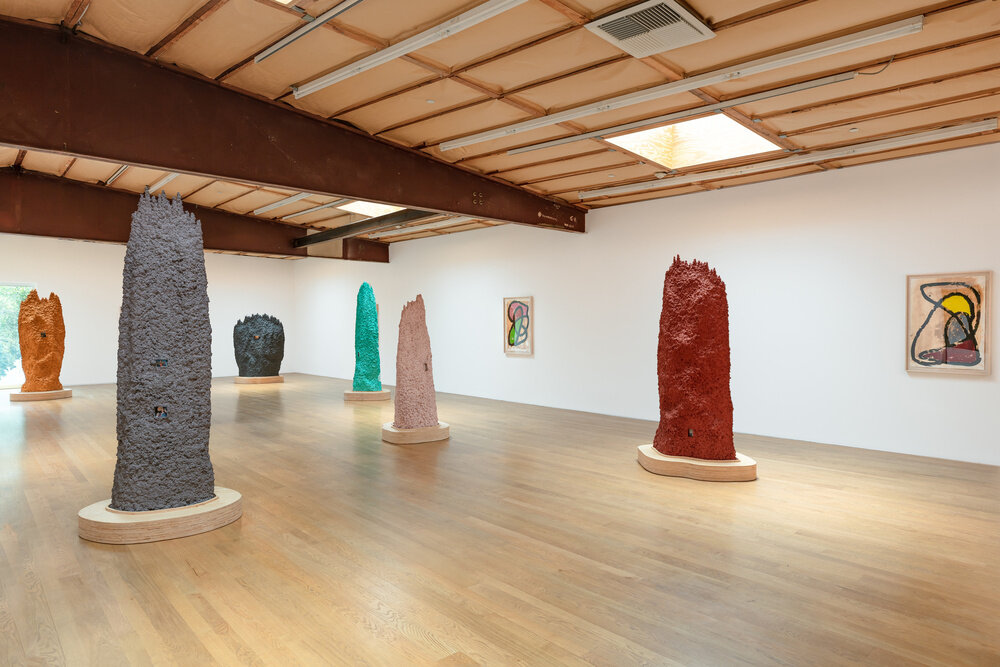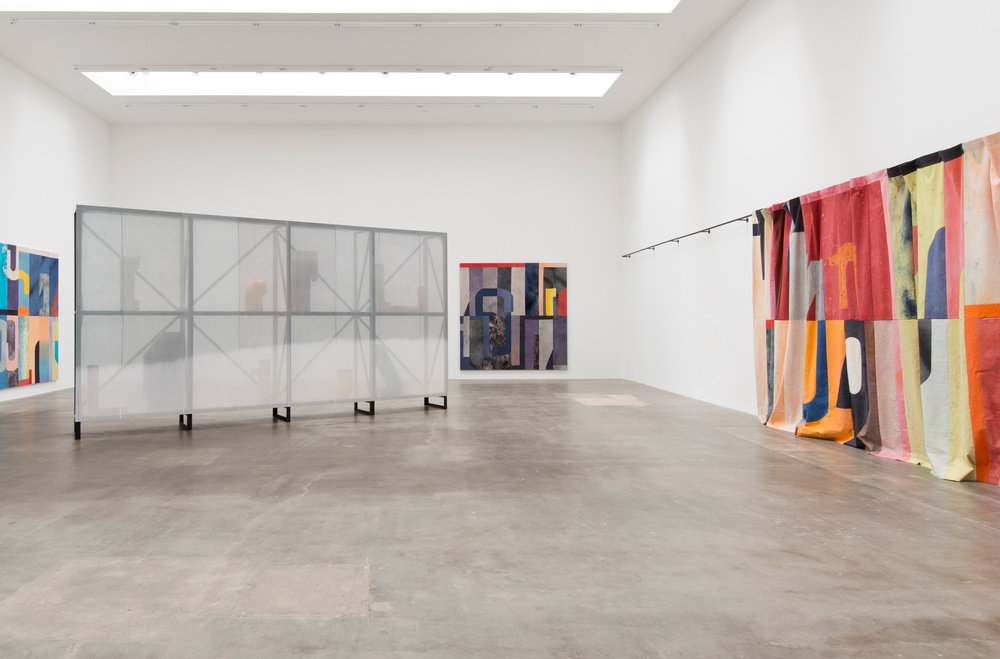Pia Camil

Pia Camil
July 17 – August 14, 2021Los Angeles

Pia Camil
July 7 – August 12, 2016New York

Pia Camil
July 12 – August 23, 2014Los Angeles
Biography
Pia Camil (b. 1980, Mexico City, Mexico) draws inspiration from the urban landscapes of Latin America, engaging with the history of modernism to create paintings, sculptures, performances, and installations. Often using laborious fabrication processes in collaboration with local manufacturers, the artist decelerates the frenetic pace of mass commodification with handcrafted production, as evinced in the intimate quality of her works.
After attending art school in both the US and England, Camil returned to her native Mexico City where she became inspired once again by its landscape, markets, and insurmountable energy. The abandoned brick buildings along the highway inspired some of her early projects, in which Camil documented the ruins and then created paintings in their shapes. Similarly, abandoned and dilapidated billboards—which display fragments of numbers or letters—became source imagery for hand-dyed and sewn paintings, curtains, and geometric ceramic sculptures. Both projects engaged with abstract images in different ways, uncovering the symbols and messages encoded in the cultural landscape.
In a 2016 series called Skins, Camil explored commercial display structures seen throughout Mexico’s markets. Using that same inexpensive plywood material, Camil created works resembling Frank Stella’s Copper Paintings, a nod to American Modernism, but also a comment on the economic disparity between cultures. The visual language of Modernism and Minimalism continues to influence Camil’s investigations—as seen in her subsequent solo exhibition at the New Museum, A Pot for a Latch. For this exhibition, Camil presented a participatory installation where modular display systems were composed of lines and grids evocative of the works of Sol Le Witt and Agnes Martin. This exhibition was an opportunity to engage visitors by inviting them to exchange items hanging on the displays. For Camil, the objects became an index for an individual’s personal history as well as culture as a whole.
More recently, Camil has staged performances using large canopies and curtains comprised of hundreds of castoff T-shirts sourced from secondhand markets. The garments are produced in Latin America, sold to retailers in the United States, and later discarded and sold as bales in Mexico. Even though they are dyed, the American logos remain visible and point to the complexity of US-Mexico relations. Iterations have taken place at the Museum of Contemporary Art in Guatemala, Guatemala City, Guatemala, Palais de Tokyo, Paris, France, and SCAD Museum of Art at the Savannah College of Art and Design, Savannah, GA. For her first institutional exhibition in Mexico City at the Museo Universitario del Chopo in 2018, Camil engaged with the museum’s history and its relation to the music street market (El Chopo tianguis) by creating a large-scale backdrop made from exchanged band t-shirts with integrated speakers. With this body of work, she hopes to create environments for reflection on other possibilities of economic relations, swap systems, consumerism, geographical transits systems, and the circulation of goods.
Camil lives and works in Mexico City, Mexico. She has a BFA from the Rhode Island School of Design, Providence, RI and an MFA from the Slade School of Fine Art, London, UK. Her work has been exhibited internationally, with recent solo museum exhibitions including Three Works, MOCA Tucson, Tucson, AZ (2021); Velo Revelo, Clark Art Institute, Williamstown, MA (2020); Fade into Black, Queens Museum, Queens, NY (2019); Bara, Bara, Bara, Tramway, Glasgow, Scotland (2019); Telón de boca, Museo Universitario del Chopo, Mexico City, Mexico (2018); Split Wall, Nottingham Contemporary, Nottingham, UK (2018); Fade into Black, SCAD Museum of Art, Savannah, GA (2018); Bara, Bara, Bara, Dallas Contemporary, Dallas, TX (2017); A Pot for a Latch, New Museum, New York (2016); Skins, Contemporary Arts Center, Cincinnati, OH (2015); and Cuadrado Negro, Basque Museum-Centre of Contemporary Art, Vitoria-Gasteiz, Araba, Spain (2013).
Selected Works
News
The Brooklyn Rail | Pia Camil’s Friendly Fires
07/03/2024
Pia Camil: "Friendly Fires" Book Launch Party
06/29/2024
Pia Camil: Fuego Amigo | Museo de Arte Carrillo Gil, Mexico City, Mexico
02/10/2024
Artnet News: Pia Camil’s Art about Global Commerce Made Her a Star. Now, She’s Turning Her Focus to Another Kind of Exchange—between Humans and Other Species
12/06/2022
Frieze: La Noche Del Cisne: Mexico City’s Secret Cabaret
05/03/2022
Sculpture Magazine: Pia Camil
11/12/2021
Related Publications
Pia Camil: Friendly Fires